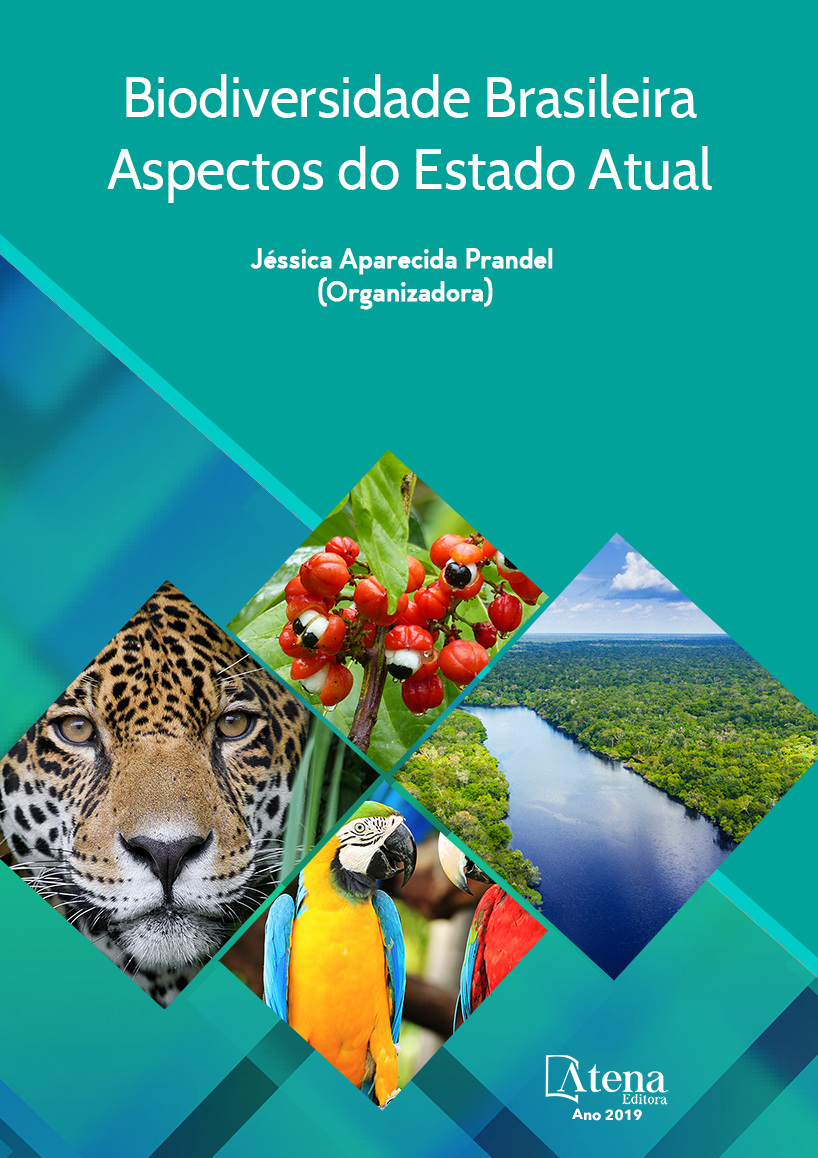
Padrões de movimentação da onça pintada (panthera onca) no parque nacional da serra da capivara
Ecologia do Movimento estuda
os padrões de deslocamento do animal,
quais os aspectos ambientais e processos
ecológicos que influenciam a movimentação,
trazendo informações sobre como a espécie
utiliza os recursos disponíveis no ambiente.
O trabalho tem por objetivos explorar como a
estrutura da paisagem influencia os padrões
de deslocamento da onça-pintada (Panthera
onca) em uma área heterogênea da Caatinga,
localizada no Parque Nacional da Serra da
Capivara, no Estado do Piauí. Os mapas foram
gerados no arcGIS e as análises estatísticas
foram realizadas no programa R. Para analisar
as trajetórias do indivíduo monitorado foi
utilizada a função de seleção de passos (SSF)
que baseia se na análise de distribuição de
comprimentos de passos e ângulos de virada
e na verificação da existência de correlações
dessas tomadas de decisão com variáveis da
paisagem. Foi gerado um kernel de 95% com
26563,4 hectares e 50% com 5495,8 hectares
para estimar a área de vida. Foram produzidos
mapas de uso e cobertura, onde a vegetação
da área foi dividida em quatro classes, a
arbustiva baixa, arbórea densa, arbustiva alta
sendo a mais comum e arbórea baixa. A classe
que possui a maior forma de seleção é arbórea
baixa densa. De acordo com tamanho e
angulação dos passos, todas as direções foram
selecionadas pelo animal tendo uma maior
prevalência para direções norte e sul. A maior
frequência de tamanho dos passos foi entre 0 á
500 metros e em seguida de 500 á 1000 metros.
Através da classificação e seleção de passos
é possível trazer informação sobre a ecologia
da espécie, que podem ser importantes para
conservação e manejo.
Padrões de movimentação da onça pintada (panthera onca) no parque nacional da serra da capivara
-
DOI: 10.22533/at.ed.4191915086
-
Palavras-chave: Caatinga, Ecologia do movimento, felinos, seleção de passos, uso de habitat.
-
Keywords: Caatinga, Movement ecology, felines, selection of steps, habitat use.
-
Abstract:
Movement Ecology studies
the patterns of movement of the animal,
the environmental aspects and ecological
processes that influence the movement,
bringing information about how the species uses
the resources available in the environment.
The objective of this work is to explore how the
landscape structure influences jaguar (Panthera onca) patterns in a heterogeneous
area of the Caatinga, located in the Serra da Capivara National Park, in the State
of Piauí. The maps were generated in the arcGIS and the statistical analyzes were
performed in the R program. To analyze the trajectories of the monitored individual, the
step selection function (SSF) was used, based on the analysis of the distribution of step
lengths and angles of turn and in the verification of the existence of correlations of these
decision making with landscape variables. A 95% kernel was generated with 26563.4
hectares and 50% with 5495.8 hectares to estimate the area of life. Use and cover
maps were produced, where the vegetation of the area was divided into four classes,
low shrub, dense tree, tall shrub being the most common and low tree. The class that
has the largest form of selection is dense low tree. According to size and angulation
of the steps, all directions were selected by the animal having a higher prevalence for
north and south directions. The greatest pitch frequency of the steps was between 0
and 500 meters and then 500 to 1000 meters. Through classification and selection of
steps it is possible to bring information about the ecology of the species, which may be
important for conservation and management.
-
Número de páginas: 15
- Dra. Silvia Neri Godoy
- Dr. Milton Cezar Ribeiro
- Dr. Ronaldo Morato
- Ms. Júlia Emi de Faria Oshima
- Danieli Ribeiro


